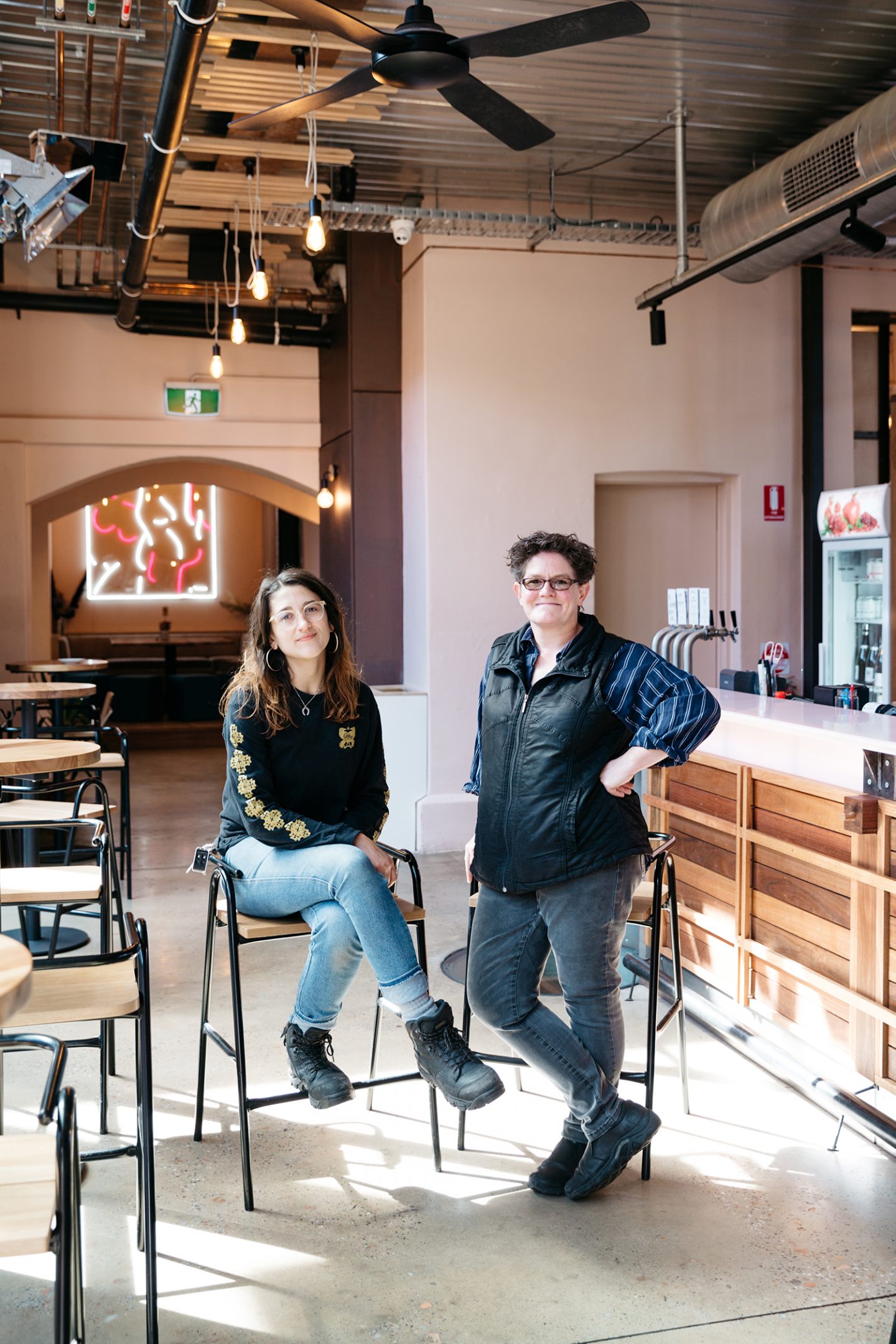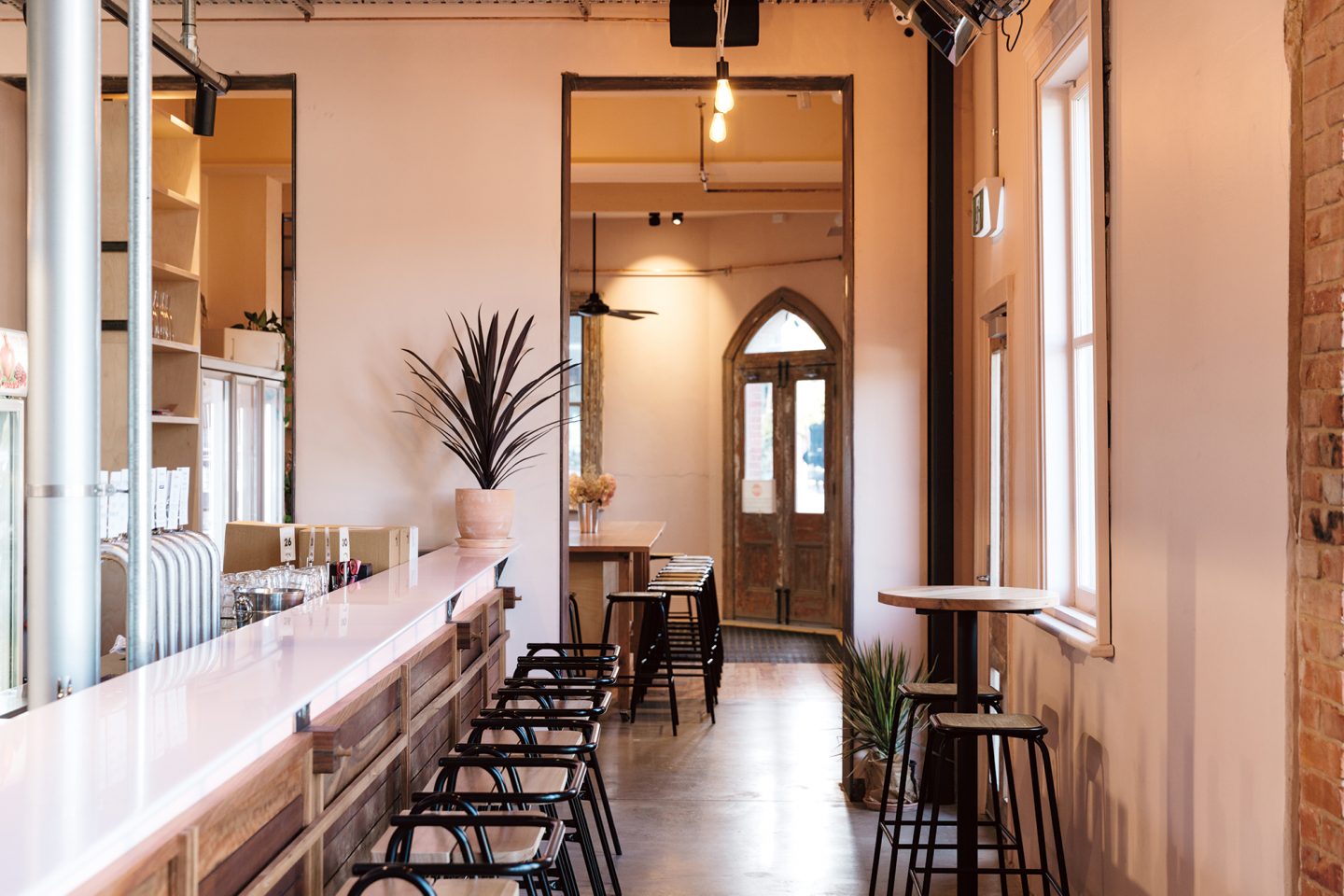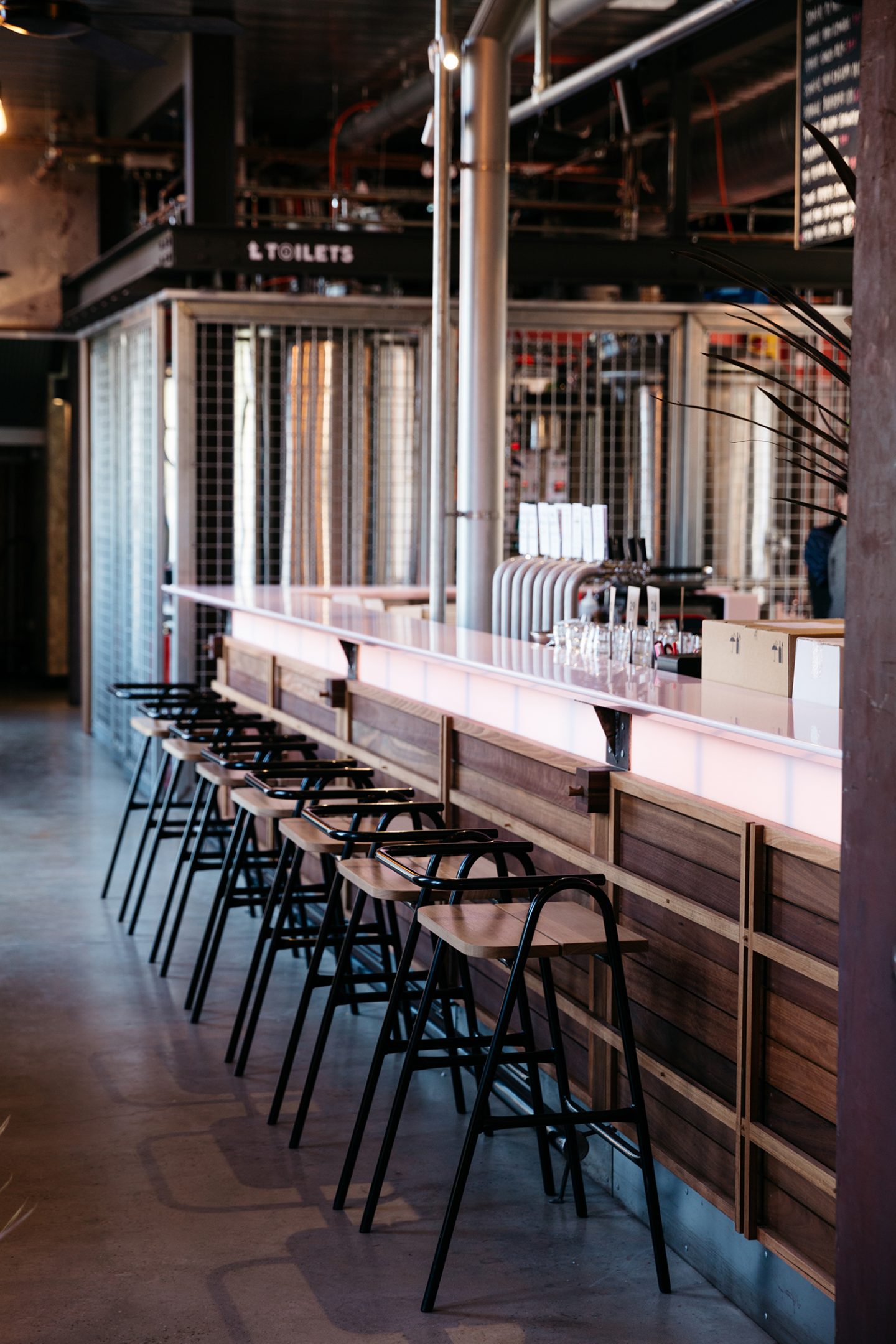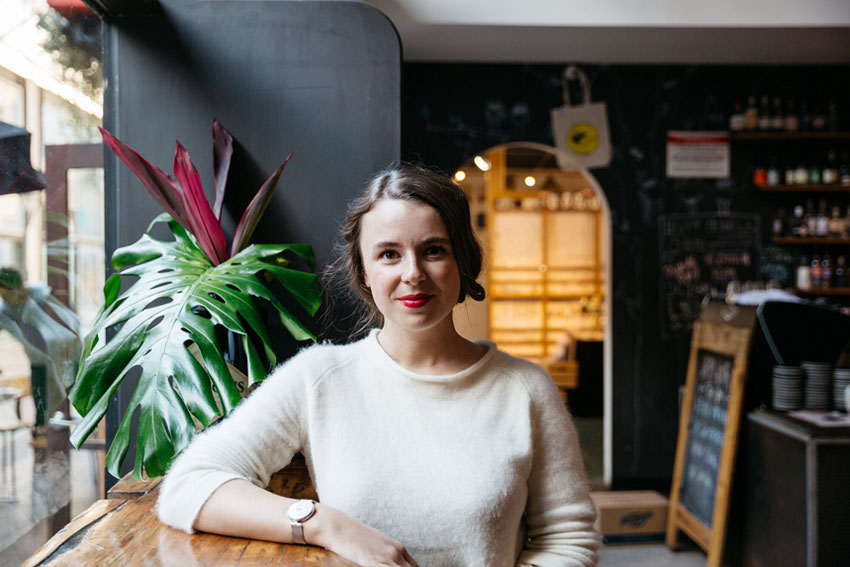
Walter Marsh
Walter is a writer and editor living on Kaurna Country.

Women were barred from Adelaide’s front bars for much of the 20th century, which means every historic pub in the city has gender discrimination built into its very architecture. So how does a socially conscious, all-women brewing company like Sparkke Change remake a once-shady den for a more equal future?
“The first thing that we did was work really hard from the outset to open the pub up, and to make sure that from a staff perspective, we’ve got line of sight on absolutely everybody in the whole place,” Sparkke Change Beverage Company co-founder Kari Allen tells The Adelaide Review of the former Whitmore Hotel, now rechristened Sparkke at the Whitemore.
“There were dartboards, pokies, it was a narrow space with big screen TVs,” she says of the unrenovated site. “The space on each side [of the bar] was much tighter, and, really, all it was doing was inviting people to come in, watch the footy or play darts. There was nothing about it that felt inclusive”
When pubs in Adelaide undergo renovation, it often produces similar, surface-level changes: an abbreviated name, a re-modelled beer garden and, depending on the target demographic, the removal or installation of retro 1970s-inspired wood panelling. Working with Troppo Architects, the Sparkke Change team have used this classic heritage pub to rethink what a heritage pub actually means, from the lighting down to the loos.

Ripping out unnecessary internal barriers (“ it was a rat’s maze!”) created a series of distinct but overlapping spaces, unified by abundant light and visibility. “More than anything it’s about transparency and visual access,” Allen says. “We have brought a huge amount of light – it was so dark. You’ll find in the pub there are so many different spaces with different speeds, and that’s all about designing for inclusivity, designing for different moods.”
The pub’s distinctive colour palette and aesthetic – Instagram-friendly pink pastel, abundant native floristry and eye-grabbing neon lighting features – are all conscious choices to nurture a different kind of pub ambience. “We did quite a lot of research about what brings down aggression, and we wanted something quite soft. That was very much a decision we took against the tradition – I don’t think there are many pubs with our colour palette.”
Gender-neutral bathrooms are a favourite target for culture warriors, but for Sparkke, rethinking how pub toilets work posed obvious benefits. “In the old hotel there was one toilet; one for a woman and one for a man, and then there was a urinal. Our loos are unisex, and we actually believed that the openness in terms of the space and making it unisex would put everybody on better behaviour. We haven’t had a single incident or problem [since opening].

“Normally, you kind of walk down this maze to a toilet down the back of a pub, with men’s and women’s toilets beside each other,” Allen explains. “So, you’re walking down this narrow passage that nobody can see, and all sorts of stuff can happen. We just completely eliminated that with the design.”
Twenty-two security cameras have also been installed, but, as Allen notes, safety means more than retrospective action. “The design here has been preventative, and we’re really proud of that.”
The theme of transparency continues from the onsite ‘nano brewery’ helmed by Sparkke brewer Agi Gajic to the kitchen, which can be viewed through glass from the dining room.
“That’s another way of creating inclusivity, another way of increasing the safety of the spaces,” Allen says. “Traditionally, in old pubs, kitchens are the arse-end of the world. You’ve got an apprentice in there who can’t be seen by anyone, and, in our environment, it’s all on show, it’s all visible. Safety doesn’t just sit in terms of the relationship between publican and companies, but it’s also with staff holistically.”
It’s all a long way from the Whitmore Hotel of old. The Queen’s Arms Tavern first operated on this site in 1848 under licensee Thomas Maslin, and, over 180 years, the space has undergone numerous changes from the original 1840s building to the later bluestone façade that has faced onto Whitmore Square for a century. In recent decades, it has cultivated a shadier reputation as one of the more potent examples of a hyper-masculine city pub.

“You mean a former strip joint, and one of the top gambling dens of the state?” Allen says bluntly. “We’ve never met anybody who apparently came when it was a strip joint. Apparently, no man in Adelaide ever visited this when it was strip joint – they say ‘I know The Whitmore’, and quickly follow it up with ‘but I’ve never been inside’.”
Rather than ignore the building’s history, the Sparkke restoration leans into it, celebrating features and stories that have been covered for decades. “Preservation is always a part of what we’re interested in here – revealing the history of the pub,” she says. Upstairs in the Morphett Street-facing wing of the building, workers discovered construction techniques from another time. “They pulled the pressed tin down and discovered a wood shingle ceiling,” she says. “Those were outlawed in 1850s, so instantly we’re in an old part of the pub, and then this is the new part.”
Paring back the render of an interior wall also revealed the hand painted signage of the oldest part of the site. “The signage up there said ‘the Queen’s Arms’. We started digging and what’s become apparent – and you’ll see it all over the pub – the history is revealed everywhere you look.” Now dubbed ‘The Queens Room’, the wood-shingled room is now a function space that just hosted its first same sex wedding.
Sparkke at the Whitmore is still a work in progress – Gajic’s first batch to be produced onsite is due in the next two months, while the kitchen is soon to be expanded to accommodate its newest star recruit, former The Pot chef Emma McCaskill. But through it all, the project’s guiding philosophy remains.
“It really celebrates both the light and the dark of the history of the venue,” Allen says. “We’ve even got the stripper pole here, and we’re going to mount it on the wall”.
Sparkke at the Whitmore
317 Morphett Street, Adelaide
sparkke.com


Walter is a writer and editor living on Kaurna Country.